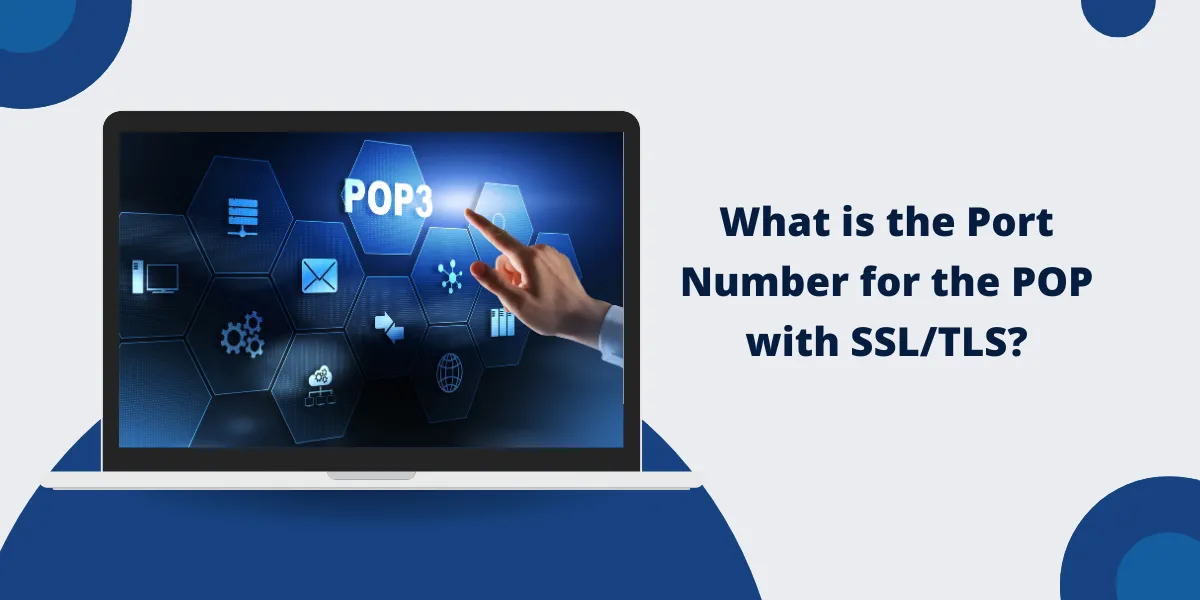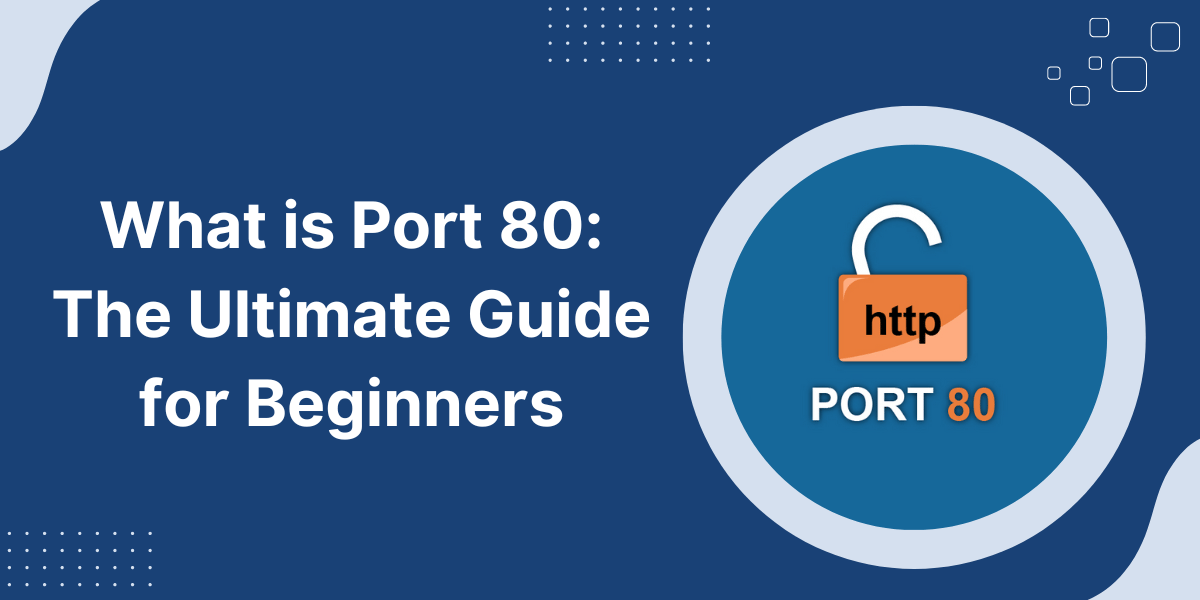The default port number for POP3 with SSL/TLS encryption is 995. This secure port ensures emails and login credentials are transmitted encrypted, protecting data from hackers. POP3 (Post Office Protocol) retrieves emails from a server, while SSL/TLS adds a critical layer of security.
What is POP and Why Should You Care?
The Post Office Protocol (POP) functions as a protocol which email clients utilize to retrieve messages from mail servers. The current standard for email retrieval is POP3 which stands for Post Office Protocol version 3. The default operation of POP3 differs from IMAP because it downloads messages to your device while removing them from the server. The POP3 protocol works well when you need to manage server storage constraints.
The question arises about port number significance in relation to POP protocols. The secure communication for email protocols such as POP, IMAP and SMTP relies on distinct port numbers.
What Port Does POP3 Use with SSL/TLS Encryption?
POP3 with SSL/TLS encryption uses Port 995. The transmission of your email data becomes encrypted through Port 995 which prevents unauthorized access. When configuring Outlook or Thunderbird email clients for POP3 with SSL you must specify this port number for receiving incoming mail.
Default POP3 Port Number with SSL/TLS
The POP3 port number for secure connections (SSL/TLS) is:
- Port 995: Used for encrypted POP3 email retrieval.
Other Essential Email Port Numbers
POP3 Port Number for Outlook (Non-SSL)
- Port 110: Default unencrypted POP3 port (less secure).
SMTP SSL Port (Outgoing Emails)
- Port 465: Legacy SMTP port with SSL encryption (still used by some providers).
- Port 587: Modern SMTP port with STARTTLS (recommended for secure email sending).
IMAP Port Number (Incoming & Outgoing)
- Port 993: Secure IMAP with SSL/TLS (for email retrieval).
- IMAP port number outgoing emails still rely on SMTP ports (465 or 587).
Why Use Port 995 for POP3?
- Encrypts email downloads, preventing hackers from intercepting messages.
- Required by most modern email providers (e.g., Gmail, Yahoo, Outlook.com).
- Works with POP3 port number for Outlook and other email clients.
How Does This Compare to IMAP and SMTP?
The email system includes three essential protocols for managing emails: POP3, IMAP and SMTP.
- Internet Message Access Protocol (IMAP):
- IMAP functions as a protocol which enables users to synchronize their emails between different devices thus supporting email access on smartphones as well as laptops and tablets.
- IMAP port number: Port 143 (unencrypted)
- IMAP SSL port number: Port 993 (encrypted)
- SMTP (Simple Mail Transfer Protocol):
- Your SMTP server manages the delivery of outgoing messages. SMTP acts as the communication protocol which ensures that your funny memes along with your business proposals reach their intended recipients.
- Standard SMTP port number: Port 25 (unencrypted, often blocked by ISPs)
- SMTP SSL port: Port 587 (encrypted, preferred)
How to Configure POP3 with SSL in Email Clients
- Open your email client(e.g., Outlook, Thunderbird).
- Enter incoming mail server (e.g., gmail.com).
- Set POP3 port number to 995 (SSL/TLS enabled).
- For SMTP SSL port, use 465 or 587 (with TLS).
How to Set Up POP3 Port Number in Outlook
The following instructions describe how to set up the POP3 port number for secure email access when using Outlook as your email client.
- Open Outlook and go to File > Account Settings > Server Settings.
- Under Incoming Mail Server, select POP3 from the dropdown menu.
- Enter the POP3 server address provided by your email service provider (e.g., pop.yourdomain.com).
- For the Port Number, enter 995.
- Ensure the Encryption Method is set to SSL/TLS.
- Save your settings and test the connection.
Your Outlook client can retrieve emails securely through POP3 by following this configuration process.
Why Does SSL/TLS Matter?
SSL (Secure Sockets Layer) and TLS (Transport Layer Security) protect your email data while it is being transmitted by converting it into encrypted information which hackers and malicious actors cannot access. Your email data including password reset links and business communications will become vulnerable to exposure when encryption is absent. Your information stays private when you select SSL/TLS for POP3, IMAP or SMTP.
Comparison Table: Email Protocol Ports
Here’s a handy summary of the key port numbers for email protocols:
|
Protocol |
Default Port |
SSL/TLS Port |
Usage |
|
POP3 |
110 |
995 |
Retrieve emails (download & delete) |
|
IMAP |
143 |
993 |
Sync emails across devices |
|
SMTP |
25, 587 |
465 |
Send outgoing emails securely |
Final Thoughts
The proper understanding of port numbers remains essential for both IT administrators and anyone who wants to establish their email client because it ensures both secure and smooth email operations. The required port number for POP3 with SSL/TLS communication stands at Port 995 because it is simple to remember and essential for encrypted communication.
The email synchronization across devices requires IMAP with its encrypted port 993 instead of POP3 because it only downloads emails to one device. The correct SMTP with SSL port number for sending emails is 587.
Even though email technology appears outdated it continues to function as the fundamental communication method for business organizations and personal users. Your email client needs proper port number configuration to establish a secure connection which provides reliability to your inbox.
Frequently Asked Questions (FAQs)
What is the port number for SSL/TLS?
SSL/TLS uses several standard ports. HTTPS uses port 443, SMTPS uses port 465, POP3S uses port 995, and IMAPS uses port 993. These ports ensure secure data transmission for different protocols.
What is the port number of POP?
The standard POP3 port is 110 for unsecured connections. POP3 with SSL/TLS security uses port 995, and most modern email systems use secure port 995.
What is the standard POP3 port without SSL?
The standard POP3 port without SSL is 110. This port handles unencrypted POP3 connections. Security experts recommend using port 995 with SSL/TLS instead of port 110.
Is POP3 port 995 secure?
Yes, POP3 port 995 is secure. The port uses SSL/TLS encryption to protect email data. This encryption prevents unauthorized access to email communications.
What is the difference between POP and IMAP ports?
POP3 uses port 995 for SSL/TLS connections, while IMAP uses port 993. Both protocols serve different email management purposes.
Can I change the POP3 SSL port number?
Email servers allow custom port configurations, and most email clients need matching port settings. Default port 995 remains the standard choice for POP3 SSL.
Why do I need SSL for POP3?
SSL encryption protects email passwords and content. Hackers cannot intercept data on SSL connections, ensuring safe email retrieval over the Internet.

Priya Mervana
 Verified Web Security Experts
Verified Web Security Experts
Priya Mervana is working at SSLInsights.com as a web security expert with over 10 years of experience writing about encryption, SSL certificates, and online privacy. She aims to make complex security topics easily understandable for everyday internet users.



